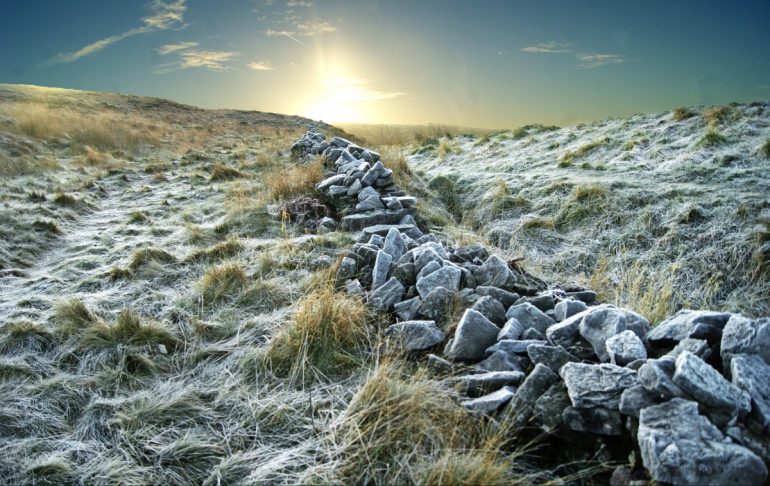In 2012, an oddly warm March jumpstarted Michigan’s growing season. Farmers spotted peach and apple buds weeks ahead of schedule, and gardeners fondled eager daffodils and irises. Then, in April, fruit farmers woke in horror to discover that a sudden freeze had decimated their plants. Frostbitten leaves dropped from branches; blackened daffodil shoots disintegrated in their beds. Fruit growers scrambled to salvage their crops, using helicopters to spray their orchards with warm water in a last-minute bid to stave off another frozen night. Too late.
A parched summer passed. In the fall, farmers across the state gathered record low fruit harvests. My roommates and I mourned the lack of apple-picking.
Then, in 2013, despite relentless rains and waterlogged fields, the farmers tried again. This time, leaves swelled and blossoms burst. Fields grew. Harvests were tallied. And fruit farmers hauled in a bumper crop of blueberries, apples, and peaches—the pent-up energies of their formerly ravaged orchards. We sighed in relief and reached for another handful of cherries.
***
Creation is built to endure. From continents to tidepools to DNA, the natural world consists of ten million lifelines woven together into a great safety net—that proverbial web of life. If all were as it should be, plants and animals and microbes and weather and time would maintain the ecosphere’s structural integrity. For billions of years, through ice ages and asteroids and viruses and wildfires, creation has exemplified grace under pressure. Nature may bend, flex, and morph—but never break.
We humans seem bent on testing this theory. We’ve spent millennia sawing through nature’s safety net, tugging on the strings to find their weak points. Our meddling has caused a spectacular level of damage. I look at our bruised world and wonder if someday we’ll sever the crucial link that brings the whole thing tumbling down on our shoulders. But for now, the peach trees keep blooming and the frayed net holds.
***
Michigan’s frozen fruit trees suffered heavily in the days and weeks after the April frost. They poured time and arboreal resources into the production of now-shriveled leaves and blossoms. But a leafless tree has no future; with survival in the balance, most dredged up the energy to try again. The second round was unimpressive, yielding crippled leaves and few flowers. But it was enough.
The new leaves bought the trees time and ensured a steady supply of photosynthesized sugars that could be squirreled away until winter passed the baton to spring. I’m sure not all of the trees successfully navigated the long months of snow. But once spring returned, the hardy survivors showed the world what they could do.
Ecologists are still teasing out why some ecological systems bend gently and bounce back in the face of disturbance, while others snap and fracture into disorder that can take centuries—or millennia—to self-correct. Maybe what matters is that, eventually, they always do.
And this is the part I love: no barren land is barren for long. Even a volcanic island swept clean by a fresh lava flow can, given enough time, support life again. Billions of years before poet Wendell Berry set pen to paper, nature was already practicing resurrection. If apple trees and islands can mimic our Savior by coming back to life, maybe we can practice resurrection, too.
We have our own structural integrity, our own steadfast safety net. Not all of us respond in the same way to life’s disturbances: sometimes we flex and bounce back, and sometimes we collapse in a heap, nursing wounds that can take a lifetime to mend. But mend we can. The process won’t be easy. But if we know who to lean on, we can dredge up the strength to withstand and rebound and rebuild.
By Geneva Langeceland





